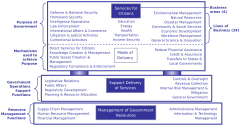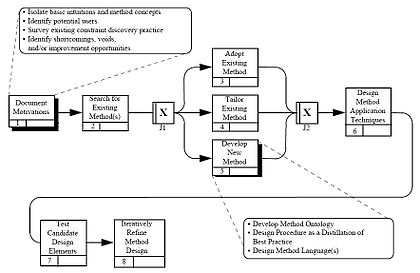Sustainable landscaping is a modern type of gardening or landscaping that takes the environmental issue of sustainability into account. According to Loehrlein in 2009 this includes design, construction and management of residential and commercial gardens.
Definition
A
sustainable garden is designed to be both attractive and in balance
with the local climate and environment and it should require minimal
resource inputs. Thus, the design must be “functional, cost-efficient,
visually pleasing, environmentally friendly and maintainable". As part of sustainable development,
it pays close attention to preserving limited resources, reducing
waste, and preventing air, water and soil pollution. Compost,
fertilization, integrated pest management, using the right plant in the right place, appropriate use of turf and xeriscaping (water-wise gardening) are all components of sustainable landscaping.
Benefits
Sustainability
can help urban commercial landscaping companies save money. In
California, gardens often do not outweigh the cost of inputs like water
and labor. However, using appropriately selected and properly sited
plants may help to ensure that maintenance costs are lower because of
reduced inputs.
- Long lasting
- Reduced water usage and no water run off or puddles
- Minimal use of fertilizers and pesticides
- Use of green waste
- Conservation of energy and resources
Issues
Sustainability issues for landscaping include:
Non-sustainable practices include:
- Consumption of non-renewable resources
- Greenhouse gas emissions
Solutions
Some of the solutions are:
- Reduction of stormwater run-off through the use of bio-swales, rain gardens and green roofs and walls.
- Reduction of water use in landscapes through design of water-wise garden techniques (sometimes known as xeriscaping)
- Bio-filtering of wastes through constructed wetlands
- Irrigation using water from showers and sinks, known as gray water
- Integrated Pest Management techniques for pest control
- Creating and enhancing wildlife habitat in urban environments
- Energy-efficient garden design in the form of proper placement and selection of shade trees and creation of wind breaks
- Permeable paving materials to reduce stormwater run-off and allow rain water to infiltrate into the ground and replenish groundwater rather than run into surface water
- Use of sustainably harvested wood, composite wood products for decking and other garden uses, as well as use of plastic lumber
- Recycling of products, such as glass, rubber from tires and other materials to create landscape products such as paving stones, mulch and other materials
- Soil management techniques, including composting kitchen and yard wastes, to maintain and enhance healthy soil that supports a diversity of soil life
- Integration and adoption of renewable energy, including solar-powered lighting
- Development of lawn alternatives such as xeriscaping, floral lawns, and meadows.
Proper design
One
step to garden design is to do a "sustainability audit". This is
similar to a landscape site analysis that is typically performed by
landscape designers at the beginning of the design process. Factors such
as lot size, house size, local covenants and budgets should be
considered. The steps to design include a base plan, site inventory and
analysis, construction documents, implementation and maintenance. Of great importance is considerations related to the growing conditions of the site. These include orientation to the sun, soil type, wind flow, slopes, shade and climate, the goal of reducing irrigation and use of toxic substances, and requires proper plant selection for the specific site.
Sustainable landscaping is not only important because it saves
money, it also limits the human impact on the surrounding ecosystem.
However, planting species not native to the landscape may introduce
invasive plant species as well as new wildlife that was not in the
ecosystem before. Altering the ecosystem is a major problem and meeting
with an expert with experience with the wildlife and agriculture in the
area will help avoid this.
Irrigation
Mulch may be used to reduce water loss due to evaporation, reduce weeds, minimize erosion,
dust and mud problems. Mulch can also add nutrients to the soil when it
decomposes. However, mulch is most often used for weed suppression.
Over use of mulch can result in harm to the selected plantings. Care
must be taken in the source of the mulch, for instance, black walnut
trees result in a toxic mulch product. Grass cycling turf areas (using
mulching mowers that leave grass clippings on the lawn) will also
decrease the amount of fertilizer needed, reduce landfill waste and
reduce costs of disposal.
A common recommendation is to adding 2-4 inches of mulch in
flower beds and under trees away from the trunk. Mulch should be applied
under trees to the dripline (extension of the branches) in lieu of
flowers, hostas, turf
or other plants that are often planted there. This practice of planting
under trees is detrimental to tree roots, especially when such plants
are irrigated to an excessive level that harms the tree. One must be
careful not to apply mulch to the bark of the tree. It can result in
smothering, mold, and to insect depredation.
The practice of xeriscaping
or water-wise gardening suggests that placing plants with similar water
demands together will save time and low-water or drought tolerant
plants would be a smart initial consideration.
A homeowner may consider consulting an accredited irrigation
technician/auditor and obtain a water audit of current systems. Drip or
sub-surface irrigation may be useful. Using evapotranspiration
controllers, soil sensors and refined control panels will reduce water
loss. Irrigation heads may need readjustment to avoid sprinkling on
sidewalks or streets. Business owners may consider developing watering
schedules based on historical or actual weather data and soil probes to
monitor soil moisture prior to watering.
An example of sustainable irrigation (Drip Irrigation)
Building materials
When deciding what kind of building materials to put on a site it is
important to recycle as often as possible, such as for example by
reusing old bricks.
It is also important to be careful about what materials you use,
especially if you plan to grow food crops. Old telephone poles and
railroad ties have usually been treated with a toxic substance called creosote that can leach into the soils.
Sustainably harvested lumber is available, in which ecological, economic and social factors are integrated into the management of trees used for lumber.
Planting selection
One important part of sustainable landscaping is plant selection.
Most of what makes a landscape unsustainable is the amount of inputs
required to grow a non-native plant on it. What this means is that a
local plant, which has adapted to local climate conditions will require
less work to flourish. Instead, drought-tolerant plants like succulents and cacti are better suited to survive.
Plants used as windbreaks can save up to 30% on heating costs
in winter. They also help with shading a residence or commercial
building in summer, create cool air through evapo-transpiration and can
cool hardscape areas such as driveways and sidewalks.
Irrigation is an excellent end-use option in greywater recycling and rainwater harvesting systems, and a composting toilet can cover (at least) some of the nutrient requirements. Not all fruit trees are suitable for greywater irrigation, as reclaimed greywater is typically of high pH and acidophile plants don't do well in alkaline environments.
Energy conservation may be achieved by placing broadleaf deciduous
trees near the east, west and optionally north-facing walls of the
house. Such selection provides shading in the summer while permitting
large amounts of heat-carrying solar radiation to strike the house in
the winter. The trees are to be placed as closely as possible to the
house walls. As the efficiency of photovoltaic panels and passive solar heating is sensitive to shading, experts suggest the complete absence of trees near the south side.
Another choice would be that of a dense vegetative fence composed of evergreens (e.g. conifers) near that side from which cold continental winds blow and also that side from which the prevailing winds
blow. Such choice creates a winter windbreak that prevents low
temperatures outside the house and reduces air infiltration towards the
inside. Calculations show that placing the windbreak at a distance twice
the height of the trees can reduce the wind velocity by 75%.
The above vegetative arrangements come with two disadvantages.
Firstly, they minimize air circulation in summer although in many
climates heating is more important and costly than cooling, and,
secondly, they may affect the efficiency of photovoltaic panels.
However, it has been estimated that if both arrangements are applied
properly, they can reduce the overall house energy usage by up to 22%.
Sustainable lawns
An example of a sustainable lawn
Lawns are typically the center point of any landscape. While there
are many different species of grass, only a limited amount are
considered sustainable. Knowing the climate around the landscape is
ideal for saving water and being sustainable. For example, in southern
California having a grass lawn of tall fescue will typically need
upwards of 1,365 cubic metres (360,500 US gal) of water. A lawn in the
same place made up of mixed beds with various trees, shrubs, and ground
cover will normally need 202 cubic metres (53,300 US gal) of water. Having gravel, wood chips or bark, mulch, rubber mulch, artificial grass,
patio, wood or composite deck, rock garden, or a succulent garden are
all sustainable landscape techniques. Other species of plants other than
grass that can take up a lawn are lantana, clover, creeping ivy, creeping thyme, oregano, rosemary hedges, silver pony foot, moneywort, chamomile, yarrow, creeping lily turf, ice plant, and stone crop.
Maintenance
Pests
It
is best to start with pest-free plant materials and supplies and close
inspection of the plant upon purchase is recommended. Establishing
diversity within the area of plant species will encourage populations of
beneficial organisms (e.g. birds, insects), which feed on potential
plant pests. Attracting a wide variety of organisms with a variety of
host plants has shown to be effective in increasing pollinator presence
in agriculture.
Because plant pests vary from plant to plant, assessing the problem
correctly is half the battle. The owner must consider whether the plant
can tolerate the damage caused by the pest. If not, then does the plant
justify some sort of treatment? Physical barriers may help. Landscape managers should make use of the Integrated Pest Management to reduce use of pesticides and herbicides.
Pruning
Proper
pruning will increase air circulation and may decrease the likelihood of
plant diseases. However, improper pruning is detrimental to shrubs and
trees.
Programs
There are several programs in place that are open to participation by various groups. For example, the Audubon Cooperative Sanctuary Program for golf courses, the Audubon Green Neighborhoods Program, and the National Wildlife Federation’s Backyard Habitat Program, to name a few.
The Sustainable Sites Initiative, began in 2005, provides a points-based certification for landscapes, similar to the LEED program for buildings operated by the Green Building Council. It has guidelines and performance benchmarks.








